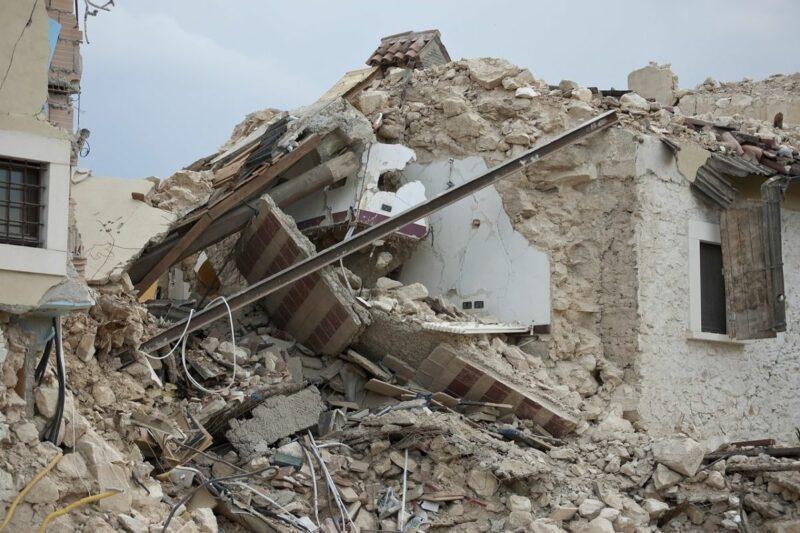Taliban’s weakness and inefficiency in response to deadly Herat earthquakes

More than 2.000 people died and around 12 villages were completely destroyed in Herat province of Afghanistan.
When a series of huge earthquakes hit Afghanistan’s Herat province in October 2023, the devastation left behind required a swift and skilled response to save lives and help the survivors. However, the reaction from the Taliban authorities showed that it lacks the ability both to plan for natural disasters and coordinate adequate relief efforts.
Suddenness and unpredictability
Natural disasters are undoubtedly among the most challenging phenomena that mankind has faced throughout history, made particularly difficult by their suddenness and unpredictability. One of the most destructive types of disaster is an earthquake, which can take just moments to destroy the infrastructure that societies have created over generations. In the countries of the developing world, the wave of these natural disasters leaves a heavy loss of lives and properties. The lower a country is in terms of human skills and technical, technological and management capabilities, the higher the level of casualties.
Where governments are politically and economically isolated and have insufficient knowledge of disaster management and risk mitigation, the population will pay a huge price. This year’s deadly 6.3 magnitude earthquake in the Zindajan area, 40 km from Herat city, is a clear example. According to the latest figures, more than 2.000 people died and around 12 villages were destroyed in what was one of the deadliest quakes to hit Afghanistan in recent years. Last June, a 5.9 magnitude earthquake in the eastern Paktika and Khost provinces, which border Pakistan, killed more than 1,000 people.
« The tragedy is very huge, we cannot define it to you in simple words. »
Due to the lack of search and rescue teams, first aid, and necessary tools and equipment, the number of casualties increased in just a few days. « The tragedy is very huge, we cannot define it to you in simple words. People are still trapped in the debris, they are alive, but we cannot reach them, » a survivor told a TV channel.
Another victim, Samira, said in an interview that their home had been destroyed and they were still living in their garden because of the fear of the building collapsing: « Our houses are completely destroyed and we can’t live in them. We are sitting outside, we have a garden and we don’t have a tent, and we are sleeping in the open air. Until now, it has been about 15 days, and no one has helped us. »
Haji Ghafoor, another resident of Herat who has returned home, says that he is still afraid of the next earthquakes: « We lived outside in the tent for about 23 days, it was very cold and no one helped us, it’s been five days since we came back home, we are very sad and worried.”
The Taliban-led government in Afghanistan has an infantile understanding of disaster risk management due to the presence of uneducated and unskilled people in leadership positions, including in the disaster management department. Their approach is to send packages of flour and oil to the affected sites weeks after the event. But what is needed is an effective plan for coordinating the joint efforts between relief organisations, prioritising vital actions before, after, and during the disaster. This plays a fundamental role in reducing the death rate.
In managing the risks of disasters, five stages are crucial: prevention, reduction, preparation, response and recovery. Where there is insufficient knowledge and management of these steps, the risk of a disaster turning into a tragedy is greatly increased.
Not allow aid
Had trained search and rescue teams with the right tools and equipment, first aid materials, and professional leadership skills been quickly dispatched to the area, we would not have seen the shocking number of casualties. Not only did the Taliban lack the ability to control the disaster planning or response themselves, except in the case of the International Organization for Migration (IOM), they did not allow aid workers from other organisations to enter the area for a number of days.
Aid workers on the ground have reiterated that the Taliban is ill-prepared to deal with such a catastrophe. According to some working in the field, recovery efforts have been further hampered by the isolation from international support that resulted when the Taliban took power in 2021, as well as their decision to ban and remove women staffers from aid organisations.
There are many gaps in the capacity of the Afghan National Disaster Management Agency (ANDMA), in terms of structure, policy and planning, logistics, and – most importantly – human resources and disaster management expertise.
In reality, the majority of life-saving activities were carried out by humanitarian organisations and other countries, for instance :
- A dozen trucks loaded with family tents, blankets, clothing, tool kits for shelter repair and reconstruction, and other items to facilitate access to clean water, were dispatched from IOM warehouses across the country. In this exceptional case, the trucks arrived within hours of the earthquake, following extensive efforts and discussions with the Taliban for permission to enter.
- Doctors, nurses, midwives, and mental health and psychosocial support counselors carrying essential medical supplies and equipment were also deployed to the affected areas.
- UNICEF dispatched 10.000 hygiene kits, 5.000 family kits, 1.500 sets of winter clothes and blankets, 1.000 tarpaulins, and basic household items to assist ongoing humanitarian efforts.
Due to the devastation, thousands of survivors have been displaced. The Gazarga transit center in Herat city has been hosting at least 380 survivors from Zindajan district (122 women, 14 men and 244 children) as well as those from affected villages in other areas. The survivors reside in temporary shelters, with limited amounts of food and water being provided by volunteers and partners. Taliban’s weakness and inefficiency exposed in poor response to deadly Herat earthquakes.
An International Rescue Committee (IRC) assessment, which surveyed 5.181 households across five districts, has indicated that :
- 96% of shelters were destroyed.
- 80% of livestock were killed.
- 100% of girls and 96% of women face protection risks, including violence.
- 47% of respondents have no access to water for drinking or cooking.
- 89% of respondents do not have enough milk or infant formula to feed babies and young children.
Without foreign aid this disaster would have turned into an even worse catastrophe because the Taliban are incapable of controlling the conditions in critical situations. Almost all of the disaster management experts and officials have either left the country or been fired by the Taliban. Mullahs (religious people) are now left in charge of the most important posts, while the Taliban’s soldiers know only how to fire a gun, not how to manage or reduce risks of natural disasters.
As the ruling authority in Afghanistan, the Taliban’s response to emergencies such as this has proved to be extremely weak and inefficient.




